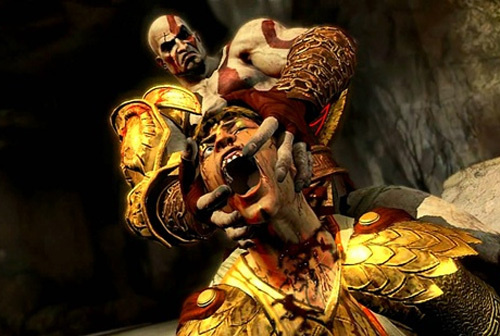

In the past few months, men and women across the U.S. have been debating guns. President Obama and his administration have called for tighter controls on the sale of certain types of firearms, while activist groups like the NRA have invoked the Second Amendment and shifted the blame from the widespread accessibility of guns to widespread violence in the media — specifically, in video games. Rather than butt heads with the NRA, the Obama administration has conceded the point. Vice President Biden met a few weeks ago with leaders in the video game industry to brainstorm suggestions to bring to Obama’s desk. A few days later, President Obama instructed the Center for Disease Control to begin research on “the effects that violent video games have on young minds.”
I’m not writing to defend video games, and frankly, I don’t think I should have to. Just as the right to bear arms is protected under the Second Amendment, the right to freedom of expression is protected under the First. A ban on violent video games would no doubt be struck down by the Supreme Court, and age restrictions are already in place. But the debate has started me thinking about why we gamers, both casual and hardcore, play the games that we do, and whether or not we are part of a culture that craves simulated violence.
People play violent video games for the same reason that people watch action movies: violence is fun. If we’re going to talk seriously about violence in media, this is the first thing we have to admit. Much of our culture of recreation is centered on the institution of simulated violence. Games like football and hockey are make-believe battles between two armies of professional soldier-entertainers. Violence and recreation have been connected since times immemorial. The modern sport of boxing is a direct legacy of Roman gladiatorial combat. From sumo in Japan to capoeira in Brazil, both observing and participating directly in violence remain the prime source of recreation for humankind.
I don’t think it would be right to assume that this eternal pairing is the result of global cultures of masculinity, though it’s a tempting assumption to make. It’s a common misconception that gamers are overwhelmingly male: According to a 2011 survey, 42 percent of gamers are female, and the numbers are quickly rising to equilibrium.
So, does it follow that violence is an essential ingredient for a good game? Of course not. The greatest video games of all time — I’m thinking of Super Mario 64 and The Legend of Zelda: Ocarina of Time — rely on clever puzzles and exploration to create an ideal gaming experience for players. In truly great games, violence serves as a convenient mechanic, not the core of gameplay.
This utilization of violence makes sense when we think historically. Warfare was humankind’s first brain game, and the first applications of strategy were enacted on the battlefield. Our brains delight in a challenge, and even more in victory. From warfare developed not only sports, but also games like Chess and Go, which simulate battlefield tactics constrained by sets of rules. Just as the Coliseum is the ancestor of the modern boxing ring, the chess board is the ancestor of today’s video games.
Nonetheless, it appears that there is something special about video games that is worth considering a little further. Activities like chess and boxing are acceptable to us as a society because they are very clearly simulated and sterilized. While someone can get hurt in a boxing match, these are professionals in the ring, and looking in on the match from the outside creates enough of a mental separation between game and reality. A common indictment of video games is that as they become more and more photorealistic, young children will have trouble separating the game from everyday life. Realism is the key here: no one raises a fuss when Mario tosses Bowser around by the tail, but murdering dozens of generic human-like enemies in a game like Call of Duty changes things.
Gamers should not jump to the defensive when the President instructs the CDC to research violent video games. The results of the study won’t produce an outright ban, and maybe the video game industry could do with some stricter age control. At any rate, this presents a critical opportunity for those of us who play and enjoy violent games to analyze why we enjoy them. Is it the violence itself we fancy, or the complex tactical thinking that the game elicits through it? I’ll be the first to admit, somewhat ashamedly, that sometimes virtual violence just feels good. When I tear through an enemy with a rifle-mounted chainsaw in Gears of War, I feel a sort of cathartic surge in my chest—perhaps an adrenaline rush, the relic of a past when my ancestors may have needed it more often.
Is it unhealthy to have fun, even to relax, with simulated violence? Is it completely natural, perhaps even beneficial, to have the sort of release that violence provides? I can’t answer these questions myself, but maybe the CDC can. Rather than being defensive, we who enjoy violent games should take a minute to think about why we game and how it affects us. Maybe this conversation will encourage the industry to move away from games that glorify photorealistic violence and toward games that are more artful, more clever and more ingenious.
a pair of X chromosomes is the only excuse for the chainsaw